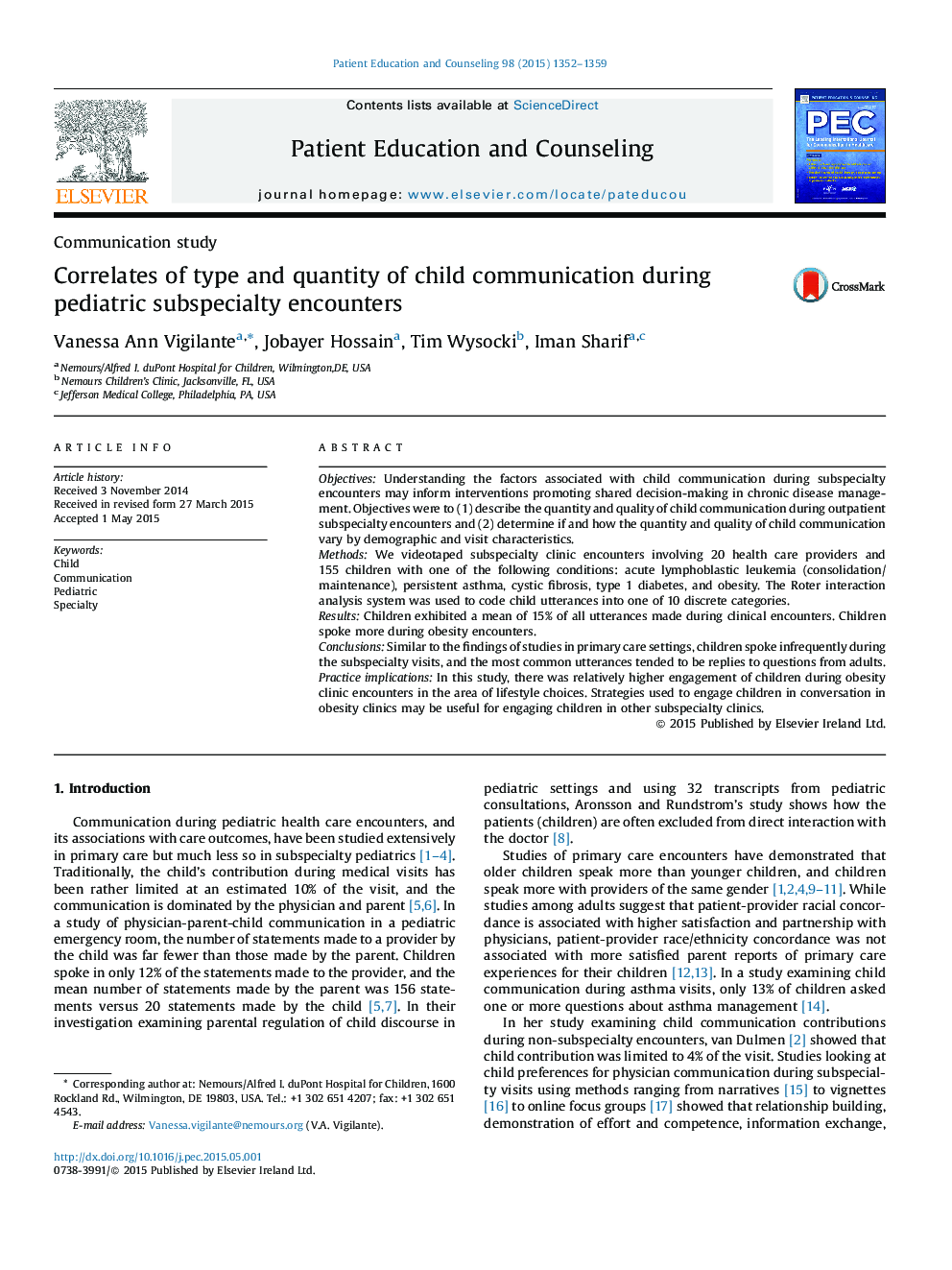| Article ID | Journal | Published Year | Pages | File Type |
|---|---|---|---|---|
| 6152855 | Patient Education and Counseling | 2015 | 8 Pages |
â¢We videotaped pediatric subspecialty visits and coded the child-provider communication.â¢Child utterances accounted for 15% of all utterances during the encounters.â¢Children in obesity clinic talked more.â¢Efforts to teach motivational interviewing skills to providers in clinics other than obesity may increase child communication.
ObjectivesUnderstanding the factors associated with child communication during subspecialty encounters may inform interventions promoting shared decision-making in chronic disease management. Objectives were to (1) describe the quantity and quality of child communication during outpatient subspecialty encounters and (2) determine if and how the quantity and quality of child communication vary by demographic and visit characteristics.MethodsWe videotaped subspecialty clinic encounters involving 20 health care providers and 155 children with one of the following conditions: acute lymphoblastic leukemia (consolidation/maintenance), persistent asthma, cystic fibrosis, type 1 diabetes, and obesity. The Roter interaction analysis system was used to code child utterances into one of 10 discrete categories.ResultsChildren exhibited a mean of 15% of all utterances made during clinical encounters. Children spoke more during obesity encounters.ConclusionsSimilar to the findings of studies in primary care settings, children spoke infrequently during the subspecialty visits, and the most common utterances tended to be replies to questions from adults.Practice implicationsIn this study, there was relatively higher engagement of children during obesity clinic encounters in the area of lifestyle choices. Strategies used to engage children in conversation in obesity clinics may be useful for engaging children in other subspecialty clinics.
